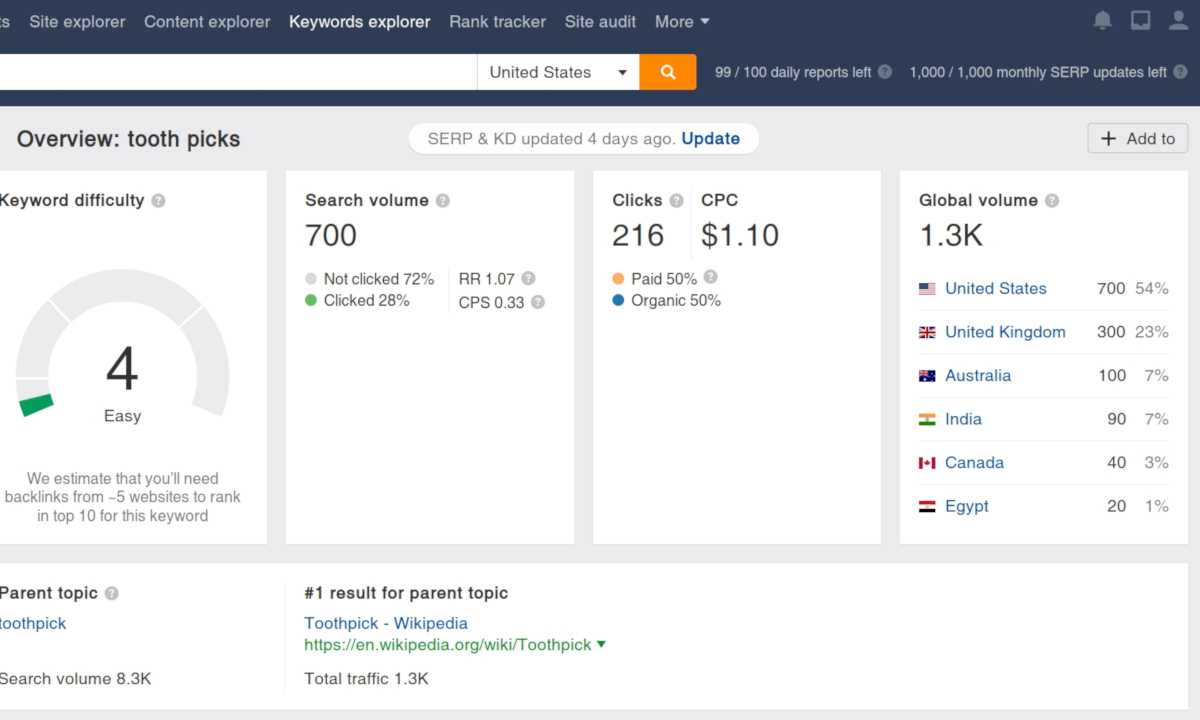UPDATE: So much has changed since writing this post with the rise of AI (ChatGPT, Claude, etc.) that it has completely changed my approach. Much of what I’ve written here is no longer relevant. Will post a major update shortly.
We’ve been hearing the word “niche” get thrown around for years.
Niche simply refers to a focused interest area in marketing.
Pretty much every blogging 101 course or tutorial starts out with choosing a profitable niche.
But I think the term has taken on a slightly different meaning in recent years compared to when I first started blogging almost a decade ago.
It used to have a more general connotation and was used by legitimate bloggers to describe their area of passion.
So for example, “blogging” would be a niche.
These days, that niche is so overcrowded that as a new blog, unless you have something mindblowing and unique, you haven’t got a hope in hell of achieving any kind of prominance there. A new blog has very little chance of breaking into a market that wide today (though you have a better chance reviving an old blog).
It’s just far too general.
So, “niche” has (in my opinion) assumed a far more laser-focused connotation - targeting ultra-specific niches within niches.
This would mean that instead of “blogging”, you’d choose a very particular angle or focus in the area of blogging and write most of your content around that one angle instead.
A topic within a topic.
Some people even go so far as to find some obscure, low-ticket item selling on Amazon or elsewhere and create an entire blog dedicated to that item in the hopes of ranking high for it.
Taking this approach does give you a better chance of becoming authoritative in whatever that sub-niche is.
Ultimately — over time — you might begin to achieve authority more broadly in something like “blogging” (if you’re lucky).
Of course, the big caveat with niche blogging like this is that it’s far more difficult to continue to produce outstanding and unique content over an extended period of time. Depending on the specificity of your targeted niche, you’ll probably hit a wall at some point where inspiration dries up and you have nothing left to say.
You begin “recycling” your ideas.
If you have a niche blog on, let’s say, angle grinders (that’s actually a blog someone’s selling for around $2000 currently), you’re going to have a very hard time writing fresh content on angle grinders a year from now!
This is the problem with most niche sites — they have about 10 original posts and the rest is just recycled and pointlessly repetitive rubbish.
I’ve avoided taking niche’ing seriously all these years for this primary reason:
Every piece of content should be purposeful and beneficial.
Every piece of content should bring something new to the table.
I don’t like churning out repetitive crap to fill content quotas.
If you’d like to jump straight to my experiment details, here you go.
Where I see most niche sites failing
Whether it’s browsing a site like Flippa or just landing on something organically, it’s always the same garbage:
- Crappy generic design (or common theme).
- Obviously mass outsourced, bland posts written by cheap freelancers.
- Content written to target keywords rather than answer human questions.
- Wordpress (😠).
- Stock or stolen images.
- Terrible UX.
- No or poor relational/email strategy.
- Unsustainable monetization strategy (usually just ads or affiliate links all over the place hoping for a click).
I’ll address most of these issues below.
I can spot a farmed niche site pretty much instantly.
These are websites (or splogs) created specifically for the purpose of ranking to either get some quick ad impressions or resell on a website marketplace like Flippa.
In other words: fake, illegitimate trash.
Sometimes these sites do well in SERP for a while.
But it’s a totally unsustainable business model because eventually Google figures it out or the site owners lose interest and move on to another project when it caps out (inevitable).
Design and user experience are almost as vital as content quality
People are expecting better experiences.
A lot of these niche site designs (including some premium Wordpress themes) are disastrous. 😣
All they do is convey tackiness and illegitimacy.
But it makes total sense why many “farmed” niche sites don’t care for UI/UX.
They don’t want you sticking around or reading their content - all they want is ad impressions or affiliate link clicks. Basically, they want you to leave their site via an ad click as fast as possible (before you discover they’re not genuine).
This is where I think Google needs to start putting more emphasis on design for its ranking algorithms - not just:
“Is it mobile responsive?”
but:
“Does this site actually look good?”
“Is this site enjoyable to look at and read?”
Lighthouse is already scoring color contrast for accessibility.
I’m quite confident (and hopeful) that more design principles will eventually be a major ranking indicator.
In any case, if you’re a niche blogger and affiliate marketer, having a nice design goes a long way in building trust.
Bland, outsourced content targeting keywords and not humans
I’ve outsourced content only a few times.
Very rarely, I’ll accept a guest post (my standards are high).
In almost every instance, I’ve been initially unsatisfied and requested extensive changes (or made changes myself with permission).
The problem with most niche site posts is that they’re written to:
- Fill a word count.
- Target a (usually long-tail) keyword.
So, you jump on Upwork and hire a writer to create a 2000 word post on “9 Best Plumbers In New York” for your ‘new york plumbers’ niche.
They go and read a bunch of reviews, check directories and so on, and come back with a generic listing, stuffed with “new york plumbers” keywords.
Now, as a niche site, you might score a good rank over time with that.
You might get some CTR from New Yorkers looking for someone to fix their toilet, and some Adsense revenue.
But is that site really viable in the long term?
Other than maybe getting a couple of bucks a month in pocket change ad revenue, what’s the point? It’ll take you months or even years just to recover your initial investment.
Then you’re stuck with a niche you know nothing about and have old, dated information on.
You’ll never build a genuine readership - people certainly aren’t subscribing.
Frankly: your content sucks.
You’ve created an unsustainable business and wasted a lot of time.
The best you could hope for in that situation is maybe selling it to a legitimate plumbing company (possible but unlikely).
Wordpress relics that need to die
SSG’s are all the rage.
And for good reason.
I mentioned in my first post here that I’ve been on a journey with static site generation lately.
I’ve covered it on my iBSD YouTube channel.
After many years of frustration with Wordpress (security issues, constant updates, unreliable 3rd party plugins, breakages, clunky databases, speed issues), I started playing around with Jekyll and instantly fell in love.
Then I moved on to Hugo and fell in love a second time.
Then I went to Gatsby which was incredible until they sold it off to Netlify.
Now I use Astro, NextJS and SvelteKit.
Static websites get you back to the basics of displaying content - just simple HTML + CSS (maybe a little JS).
No ugly PHP calls to a bloated database just to display some text and an image or two.
Ultimately, it doesn’t matter a great deal which static site generator you land on. There are many excellent ones that all have their own pros and cons.
You end up with a totally static output in the end either way.
I’ve settled on Gatsby for the time being because I simply love the concept of templating and styling through React components, and it does a superb job at handling images.
Hugo’s a close second for me.
So take a look at this site for example - it does pretty much everything a standard Wordpress blog can do on the frontend but with the added benefit of incredible Lighthouse scores and speed tests, flawless security, PWA and (in my opinion) better/easier control over content.
For niche blogging (especially where multiple sites are being managed), you want something that has a tiny footprint and with minimal hassle for rapidly deploying new posts.
I don’t want to have to deal with updates and issues that WP typically entails.
Just blazing fast content delivery.
All niche site operations I’ve seen run on these terribly clunky Wordpress installs (usually a shared host too).
Relational, email strategy
Like I said, niche farmers don’t care about pleasing their visitors.
They want their traffic to exit via an ad or affiliate link as fast as possible.
The longer a reader hangs around, the more likely they’ll realize the niche site is trash and then hit the back button on the browser.
Naturally, this means they don’t care much for email marketing either.
Relational email marketing.
Any blogger that isn’t using email effectively is downright foolish.
Email is the only means by which you can reach out directly to your readers without relying on the Silicon Valley monopolies (e.g. FB, Twitter, Google).
You have complete control over that medium.
My niche site experiment strategy laid out
Given all the problems I’ve laid out here, I’ve decided to enter the niche rat race to run some experiments.
Albeit, differently.
Legitimately.
This week I purchased a collection of very different and highly targeted domains.
I’ve deployed VPS instances (OpenBSD) on Vultr for each of them (Vultr is incredible).
Each niche is not only highly targeted and well-researched (low competition with decent volume), but (and this is key) is a topic I am personally experienced in, or invested in to some extent.
In other words, these are niches that I care about.
This is important because as I said above, the main caveat to niche’ing is losing interest or running out of things to talk about.
Even if you’re paying writers, they’re going to run out of ideas and start repeating themselves.
I’ve chosen niches that I could talk about endlessly and explore from many different angles.
This also puts me in a position to create some content myself if I ever want to (say if I use a product and want to write a review of it).
Content strategy
Obviously, I can’t personally write long, high quality articles for all these niche sites on a consistent basis.
That’s literally impossible for anyone, let alone someone as busy as I am.
So I’m outsourcing content creation.
Kind of.
What I’m actually doing is outsourcing homework - I’m taking the aspects of writing that are the most time-consuming and outsourcing the parts that don’t require a personable touch.
My homework.
Basically what this means: all written content on these niche sites will be my own and in my words BUT the bulk of the framework and research behind each post will be done by quality freelancers.
Each post on each niche site will reflect my own character and originality.
They’ll be topics I care about, am interested in and “keyword research” will only be secondary to providing value.
I want content that is not only good for SERP but good for sharing.
The hardest part (at least for me) in getting long posts written is all the research and putting the structure of the article in place.
So that’s what I’m outsourcing.
No generic fluff to fill word counts.
Right now, I’m using gatsby-transformer-remark for content management (it’s super easy to request outsourced content in Markdown files).
But I may end up exploring headless CMS options if it helps to streamline content.
SSG and design strategy
I’ve been putting the finishing touches on a boilerplate niche design for GatsbyJS.
This is basically a “theme” that I’ve purposefully created from the ground up with optimized SEO and speed that I can rapidly tweak to create gorgeous-looking and very unique niche sites.
So basically within a matter of minutes, I can have a perfectly optimized niche template configured and deployed to a server.
The only time-consuming factor on my part in setting up is designing a professional vector logo in Inkscape (I’ll probably allocate an hour or two to each site for this).
Stock images are an absolute last resort since they’re so tacky.
For the most part, all images will be taken by yours truly.
The overall design will emphasize readability, trust and (vitally) a clear CTA on every post.
No Adsense, Mediavine or similar (I may reconsider this if a site gains heavy traffic with little or no revenue).
Email campaigning and relational marketing
Most blogs these days use ConvertKit or MailChimp.
I’m in love with Drip.
It’s basically a lot more advanced in what it can do.
Right now, it’s still too early to assess what style of email campaigning will work best for each niche but the important thing is capturing and nurturing leads from the outset.
My GatsbyJS boilerplate is set up for this with several CTA’s.
I don’t want my readers to bounce or click an ad and disappear - I want to know who they are and how I can help them.
Email is vital for this.
In conjunction with email, I’ll have profiles set up on FB and Twitter as another contact point and for brand visibility.
Goals and monetization
So, obviously there has to be a goal to all this.
The truth is: I don’t need the revenue from these niche sites.
Additional side-earners are nice but I’m not completely motivated by profits here (mainly because I don’t expect to generate significant revenue in a short time).
I’ll certainly try to, however!
I’m doing this primarily out of interest and as an experiment to see how far I can take legitimate niche sites.
Importantly, I want to explore (and discover for myself) the benefits of SSG’s (like Gatsby) as a superior alternative to Wordpress.
Since most niche sites are motivated 100% by revenue, I feel like this also puts me in a unique position for testing as I won’t lose any sleep if I lose my investment on this experiment. I’m also able to focus more on quality content than “getting those clicks”.
The niches that I’ve chosen (which I will reveal in a future post) are all going to require their own monetization strategy.
I’ll share the progress of this experiment over the coming months.
One rule I’ve always had: never promote a product you can’t independently and honestly verify the quality of.






Comment Policy: I can handle harsh criticism and disagreements, but if you're disrespectful or a self-promoter, your comment ain't gettin' published.